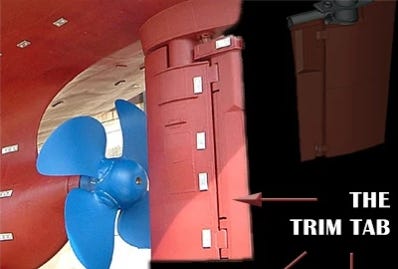Football Clinics and Professional Development Days
To get the most out of your session you need to do more than just cover content.
It’s clinic season again. Lots of football coaches out there looking for answers to solve their 1-9 seasons. It’s also professional development season in schools (when isn’t it?). Lots of administrators out there looking for answers to solve their unengaged students. I thought it would be interesting to look at these parallel experiences as both the presenter and attendee. Whether you are sitting in front of the speaker, or speaking in front of the sitter, to get the most out of your clinic or PD, you need to reach deeper than just covering content. You need to, as my sister- in- law would say, get hit in the “feels.”
Presenting at football clinics
The best advice I got about presenting at football clinics was by Coach Mike Berg from Grand Forks Central, in North Dakota. He said, “If you are wearing khakis, don’t use the bathroom just before you go on.” Coach Berg was a powerful, old school coach. I remember his presentation on the honour code for football coaches. He angrily shouted that if we were teaching “grey area” techniques, to get the “hell out of my profession, because you are what is driving kids away from football.” Coach Berg was a powerful speaker and obviously his words made an impression on me. However, the reason he was so impactful was not because of what he said, but rather because of how it made me feel. Coach Berg made me feel that I was part of a very exclusive club, whose membership carried a heavy burden. Although he was speaking about coaches who allow their kids to cheat, the message was that my job was to uphold a code against an ever-increasing tide of short cuts and quick fixes. I walked out of that ballroom feeling like a member of the Knights Templar.
As a presenter, how you make people feel will be more important than what you tell them.
Jim Harbaugh and I love a good pair of Dockers
Attending football clinics.
I have found that there are two types of coaches who attend clinics. You are either a Blind Dog in a Butcher Shop, or you are a Barstool Preacher (apologies to the band). The Blind Dog in the Butcher Shop attends every session, takes copious notes, (I hated sitting next to that girl in university. She always made me feel insecure about my doodles.) and is ready to change his entire offense based on what he saw a NFL coach present. He will spend the entire weekend sniffing everything and digesting nothing. The Barstool Preacher is worse. He will attend a few sessions and use the clinic as an excuse to get away from his wife and kids for a weekend. He will hold court in the bar, explaining why none of clinic ideas will work with the kids he has. These coaches are at the opposite ends of a bad clinic experience spectrum. My friend, Coach Rick Stewart, who does lots and lots of coaching clinics, once gave me some good advice about attending clinics. He said that the best use of your time is to find one thing over the weekend that will impact your program. He also told me that thing will rarely be an entire system (although he speaks about his Pistol Wing-T system) nor will it be found in the bar (although he and I did tip a few at the Minneapolis Glazier Clinic). Instead, he urged me to look for the “trim-tab.” The trim-tab is the tiny part of a rudder that gets turned by the current, which then turns the entire rudder, which then turns the entire ship. He said if you can find one small take away that you can implement immediately, which will turn your team in the right direction, then you have had a great clinic. This is not easy and sometimes you will feel like a prospector sifting for gold. However, since Coach Stewart shared this idea, I’ve pulled dozens of great coaching ideas that had nothing to do with Xs and Os. See previous entries for examples.
If you are trying to sniff everything you will not be able to find the gold.
Presenting at PDs
Presenting at PDs is similar to presenting at football clinics, only your audience wears less baseball caps. I’ve been fortunate to present to my teaching peers on numerous occasions. My advice is the same as a football clinic. How you make the audience feel will be more important than what you tell them.
Early in my career I taught at an affluent, suburban, high school in upstate New York. The school had a robust professional development program that regularly looked from within for presenters. I had been asked by the vice- principal to present on a note taking technique that I had learned at another PD (see next section). I loaded up the presentation with examples, instructions, and statistics. My time frame was short, so I remember having to shoehorn all of this great content into a small space. The result was a confusing mess that left the attendees looking at the clock and wishing they were grading papers. The only thing they got out of my presentation was empathy for how students must feel durning bad lessons.
I also remember presenting with my friend Larry Dake on Thomas Friedman’s book “The World is Flat.” We had been asked by the superintendent to present to the school board on this initiative. I don’t remember a thing I said. However, I remember at one point Larry, and I switched off, by slapping hands like a professional wrestling tag team. When I sat down, a parent who was sitting behind me leaned forward and whispered in my ear, “You had them eating out of your hand.” People in education need to be energized more than they need to be instructed. Don’t get me wrong, your content is important. However, your audience won’t remember how note taking made them feel. They will remember the two young teachers who were so sincere about their content that they were able to finish each other’s sentences.
We were not presenting on a conspiracy theory.
Attending PD sessions.
My experience attending PDs is actually different from football clinics. Like any other teacher, I have sat through hundreds of PDs. They have ranged from “good” to “Now I know how the kids feel.” Early in my teaching career I attended a PD from an organization called History Alive and it changed the way I taught. Without taking you though the weeds of the program, it was a breakaway from traditional “stand and deliver” methods of teaching history. It proposed an alternative which incorporated multiple intelligences. This was revolutionary in the 1990s. I was spell bound. I immediately started implementing and preaching its’ merits to anyone who would listen. I completely changed my teaching “offense”, based on what I had seen at a clinic. Although it was the opposite of what I would do at a football clinic, it was the best thing that has ever happened in my teaching career. Now, close to thirty years latter, I am still using their techniques.
Clinic season is a fun time of the football year. Everyone is undefeated and the prospect of a weekend talking about football while drinking beer is alluring. PD sessions do not hold the same excitement as football clinics but there are still parallels. I would advance that where the football coach should restrain the impulse to adopt a system they saw at a Glazier clinic, the teacher should not. If I had been cynical in 1994 would have missed out on a career of wonderful teaching moments. As far as presenting at either of these experiences is concerned, make sure that you place an emphasis on how you make the people feel over what you tell them.
And if wearing khakis, don’t go pee before you go on stage.






